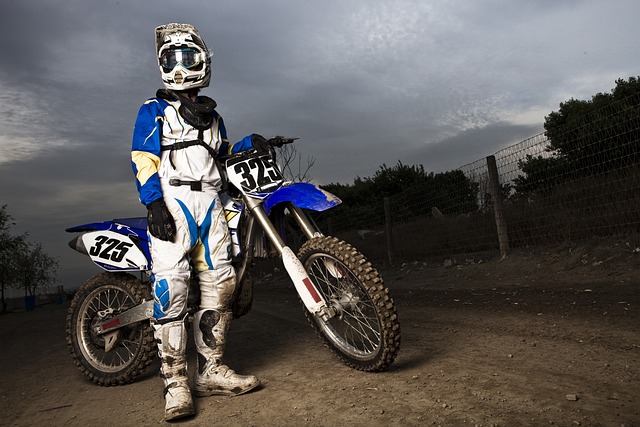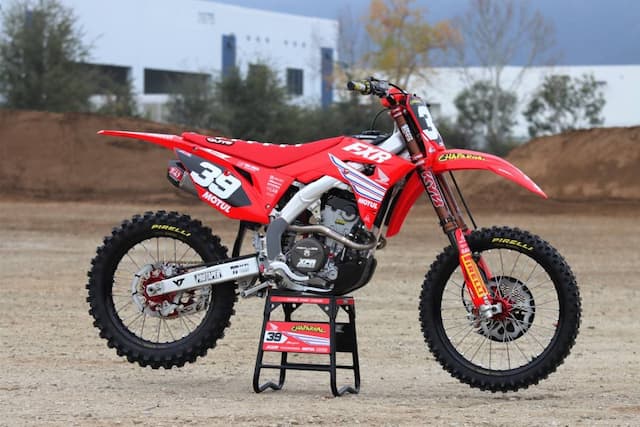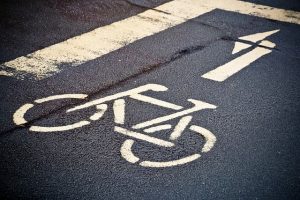No, you cannot ride a dirt bike on the road. Riding a dirt bike on public roads, city sidewalks, or in residential areas is prohibited. Dirt bikes are not street legal in stock form because they are made for “off-road use only” and don’t have the equipment needed to legally ride on the road like headlights, taillights, turn signals, insurance, or registration.
There may be repercussions if you ride a pit bike, motocross bike, or dirt bike on the street. Your bike might be impounded, towed, and you’ll probably also receive a small fine.
Although riding a dirt bike is a lot of fun, you can’t just go anywhere on your bike. When riding, you must abide by rules, laws, and regulations, which vary from state to state. Riding a dirt bike on a public road is forbidden in most states. Let’s find out more about where you can ride and why.
Table of Contents
Can You Ride a Dirt Bike on the Neighborhood Street?
A dirt bike in a residential area is generally prohibited. This is due to the fact that dirt bikes are typically not regarded as street legal. The majority of dirt bikes are designed for off-road use. They lack registration, insurance, headlights, taillights, and turn signals.
It’s not a given that you can ride your dirt bike on a neighborhood street, even if you do manage to make it street legal with new parts and registration. In addition to being noisy, dirt bikes are also illegal to ride in residential areas in many states across the nation.
Again, though, your state of residence will play a role in this. You can ride a dirt bike, for instance, in Georgia. But you have to drive it in a quiet area. You are permitted to ride dirt bikes in Florida’s neighborhoods, but you must have a title and registration for your vehicle.
In Maryland, Texas, and California, riding a dirt bike in a residential area is prohibited. However, you might be allowed to ride in a private neighborhood if you have special permission. However, it is up to your local government to decide this.
Indiana is essentially the only state where riding a dirt bike is legal without any kind of bike modifications, legal documentation, or special permission. Riding a dirt bike in your neighborhood is completely legal in Indiana. You won’t face any legal repercussions, even if your neighbors complain about the noise.
You can visit your local DMV, speak with local officials, or consult a local dirt bike expert to learn more about your state’s laws regarding riding a dirt bike.
Can You Ride a Dirt Bike in the Neighborhoods Bike Lane?
Legally, there is no rule that forbids you from using the bike lane in your neighborhood. In fact, many states make no distinction between dirt bikes and regular non-motorized bicycles. However, there’s a good chance you won’t be able to ride your dirt bike close to your neighborhood because of the noise it makes.
Of course, there is a chance that your neighbors won’t mind the noise, but this is incredibly unlikely! To be safe, you should also confirm the legality of riding in a bike lane with your local government. (Check for Do You Need A License To Drive A Dirt Bike? )

Where Can You Ride a Dirt Bike Legally?
Riding a dirt bike in your own backyard is the most straightforward option. No one can tell you whether you can ride your bike or not, but keep in mind that there are laws against noise infractions and pollution. Even though it is private property, you might not be able to ride your bike if your property is close to other houses. Be sure to comprehend the regulations before you begin biking on your property because each county, city, and town has a different set of rules.
Local state trails or a public dirt bike park are the next best places to ride. A few trails or parks only permit a specific type of vehicle to be driven or ridden there, so be sure to check the regulations before you go. If riding dirt bikes is permitted, the following are typical requirements: a DNR/registration sticker, a USFS-approved spark arrestor, an exhaust sound level limit, appropriate riding gear (helmet, boots, goggles, gloves), and possibly a membership fee.
Another excellent place to ride is on nearby public motocross tracks (or private tracks with permission). Avoid tracks and significant obstacles if you are still learning how to ride a dirt bike. Particularly on a motocross track, novice riders can pose a much greater risk to other riders (and to themselves). (Check for How Much Does A Dirt Bike Cost? )
What is a Street-Legal Dirt Bike Called?
Since they are not permitted on public roads, most states won’t let you ride a dirt bike. However, there is a possibility that you could ride your dirt bike on the street if you make modifications to it, obtain a title and registration, and apply for a license.
There are three names used to describe these types of dirt bikes. You can choose from dual sport, adventure, and Supermoto/Motard bikes.
Standard dirt bikes lack the headlights, taillights, and other components typically found on vehicles that can be driven on public roads and can be ridden without a license. However, as I have covered extensively, you cannot ride them on public streets or in the majority of neighborhoods.
To put it another way, you must modify your bike and research local rules and laws if you want to ride a street-legal vehicle. You will understand how to make your dirt bike street legal in this way.
Read about
Pros and Cons of Using a Dirt Bike for Street Riding
Let’s first weigh the benefits and drawbacks of riding a dirt bike on the street.
You may have grown up around dirtbikes, had one in the garage when you turned 16, and are now ready to enjoy the freedoms that only the open road can provide now that you are (almost) an adult. Alternatively, you may have simply happened to find a cheap used dirt bike that you intend to add lights to and register.
Whatever the reason, converting an off-road motorcycle into a street-legal thumper may be the perfect solution to give you access to a wide range of riding opportunities not available to your typical street-biased motorcycle. Compared to multi-cylinder gas-guzzlers, dirt bikes typically get pretty good gas mileage for cruising around town. You will still need to keep in mind short service intervals if you convert a motocrosser, so take care. On the road, the mileage accumulates faster.
A dirt bike can make the ideal urban assault vehicle for city commuters, not to mention an excellent bug-out vehicle in the event of the impending zombie apocalypse. Let’s make sure to take the bigger picture into account.
You should consider the intended use of your whip if you intend to undergo the conversion from dirt to dual-purpose. Your 250cc motocrosser, or even a 450cc, probably isn’t the best tool for the job if you’re looking for a commuter that will frequently require you to ride at freeway speed. Because they are built to be raced on a motocross track, those motorcycles use high-performance components and need more frequent maintenance to stay in top working order. In the long run, it probably isn’t a good idea to wear these guys out on the freeway every day.
Depending on where you’re trying to make your transition from off-road only to street-legality, the amount of money you may have to spend looking toward the used market for an already plated dual-sport motorcycle. Manufacturers currently have a few excellent options that are essentially dirt bikes with turn signals and barely give up any off-road ability in exchange for being street-legal.
Read more How Fast Does a 50cc Dirt Bike Go?
Where Can You Ride Your Dirt Bike?
Again, most dirt bikes cannot be driven through residential areas. So where exactly can you ride your dirt bike legally and safely if you live in a state or region that forbids it? There are numerous choices, some of which may not be accessible to you depending on where you live.
Private Property
On private property, riding a dirt bike is the most straightforward. Nobody has the right to judge your cycling abilities. However, keep in mind that laws against noise infractions and pollution still apply. Even though your property is private, you might be unable to ride your bike if it is close to other houses.
State Trails Or Riding Parks
State trails and riding parks are yet another choice. Although you can ride dirt bikes on some state trails, you should be aware of the regulations before entering any state parks or trails. You can ride a bike without registering it or making any modifications in some places.
You will need to adhere to certain rules in other places. Therefore, before visiting a new riding park or state trail, do your homework. In some riding parks, you might additionally need to pay a membership fee.
Motocross Track
Finally, a motocross track is the most likely location where you will be able to ride your dirt bike. A great place to legally ride your bike is here. If you are a beginner, however, exercise caution. When riding on a motocross track, there are many potential risks, particularly if you are unfamiliar with dirt bikes.
Final Thoughts
If you choose to ride a dirt bike on a public road, your first priority should be to obtain at least a provisional license, which frequently restricts you to 250 CC or smaller bikes. Additionally, the bike needs to be registered with the appropriate state transportation agency.
Before doing so, you might need to make some adjustments to the dirt bike, such as attaching a headlight that is always on when the bike is being driven, as well as adding turn signals, mirrors, a number plate, and brake lights. Be aware that some dirt bike models may require brake, exhaust, and suspension modifications to meet Australian Design Rules, though some MX dirt bikes won’t be able to receive such modifications.
The majority of states continue to prohibit riding a dirt bike (whether you have a license and registration or not) on public property that can be accessed off of existing roads, tracks, and trails, such as national parks, public reserves, sports fields, or footpaths; these regulations don’t apply to private property or to commercial tracks.



